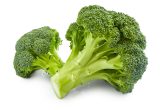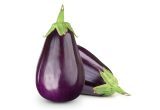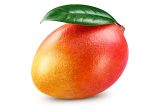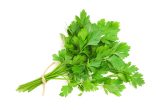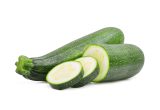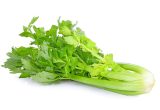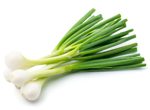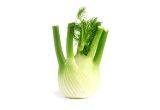Passion fruit

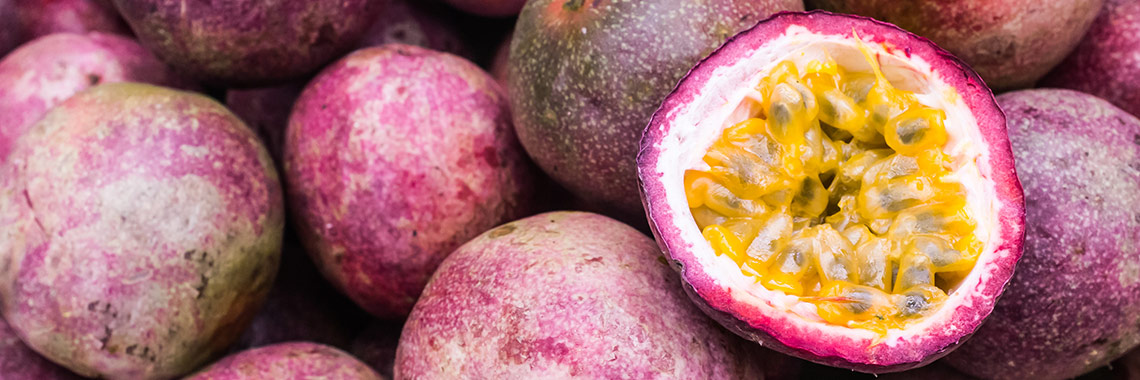
Description
- The passion fruit (Passiflora edulis) belongs to the Passifloraceae family.
- Among the different varieties, there are 2 main ones: purple (Passiflora edulis Sims) and yellow (Passiflora edulis f. flavicarpa Deg.). The purple fruit is native to Tropical America, while the yellow fruit is believed to be the result of a mutation of the purple variety (hybrid between the purple and another passion fruit species) (Kishore, 2011).
- Passion fruit cultivation is mainly found in Latin America and India, especially in the southern and northeastern regions (Kishore, 2011).
PHYSICAL AND ORGANOLEPTIC CHARACTERISTICS
- Purple or purplish passion fruits contain strong anthocyanin pigmentation while yellow fruits have no anthocyanin pigmentation (Araujo, 2017).
- The pulp of the passion fruit, edible with a sweet taste, contains up to 25% of small seeds, also edible (Lourith, 2013).
- The unique aroma of passion fruit is attributed to a few volatile compounds that degrade with increasing temperature (Kishore, 2011).
- Their intense and exotic aroma, and consequently their strong flavour, comes from a complex volatile composition, comprising mainly esters, followed by alcohols and terpenes (Mamede, 2017; Tapp, 2008).
- Ethyl butanoate, ethyl hexanoate, propyl acetate, 3-hexen-1-ol, diethyl carbonate, butyl acetate and alpha-terpineol showed high odouriferous importance in ripening passion fruit (Janzantti, 2017).
COMPOSITION CHARACTERISTICS (excluding macronutrients, vitamins and minerals)
- Passion fruit includes biologically active components such as polyphenols, terpenes, peptides, polysaccharides, and dietary fibre (Correa, 2016).
- Passion fruit seed is rich in linoleic acid (65%) and fibre (Lourith, 2013), of which pectin is one of the main ones (de Queiroz, 2012).
- Polyphenols were detected as the most abundant antioxidants (33-286.60 mg gallic acid equivalent/100 g fresh weight) in tropical fruits, and the highest content was found in passion fruit (Septembre-Malaterre, 2016).
- Piceatannol (stilbene family) is believed to be a characteristic polyphenol of passion fruit. The polyphenols of French tropical fruits are thought to protect cells from oxidative stress (Septembre-Malaterre, 2016).
- Piceatannol may benefit metabolic health, including insulin sensitivity, blood pressure and heart rate, in overweight men (Kitada, 2017).
RAW
Passion fruit provides an average of 101 calories (kcal) per 100 g, i.e. 425 kJ.
COMPOSITION TABLES
For each nutrient, the tables provide information on the content, the minimum and maximum values, as well as the percentage of the Dietary Reference Values (DRVs) for 100 g net of passion fruit or maracuja, pulp and seeds, raw.
MACRONUTRIENTS
| Constituent (g) | Average content |
Min-Max per 100g |
DRV% |
|---|---|---|---|
| Water | 73,6 | 72,90 - NC | - |
| Fibers | 6,80 | NC - 10,40 | - |
| Carbohydrates | 10,90 | - | 4,19 |
| Sugars | 8,50 | NC - 11,20 | 9,44 |
| Lipids | 3 | 0,70 - NC | 4,29 |
| Saturated fat | 0,54 | 0,059 - NC | 2,70 |
| Protein | 2,13 | 2,10 - 2,50 | 4,26 |
| Constituent (g) | Amount | Min-Max | DRV% |
|---|---|---|---|
| Water | Ciqual 2020 (valeur issue des analyses Ciqual-Aprifel 2018) | - | - |
| Fibers | Ciqual 2020 (valeur issue des analyses Ciqual-Aprifel 2018) | - | - |
| Carbohydrates | Ciqual 2020 | - | Règlement (UE) N°1169/2011 du parlement Européen et du conseil du 25 octobre 2011 |
| Sugars | Ciqual 2020 (valeur issue des analyses Ciqual-Aprifel 2018) | - | Règlement (UE) N°1169/2011 du parlement Européen et du conseil du 25 octobre 2011 |
| Lipids | Ciqual 2020 (valeur issue des analyses Ciqual-Aprifel 2018) | - | Règlement (UE) N°1169/2011 du parlement Européen et du conseil du 25 octobre 2011 |
| Saturated fat | Ciqual 2020 (valeur issue des analyses Ciqual-Aprifel 2018) | - | Règlement (UE) N°1169/2011 du parlement Européen et du conseil du 25 octobre 2011 |
| Protein | Ciqual 2020 (valeur issue des analyses Ciqual-Aprifel 2018) | - | Règlement (UE) N°1169/2011 du parlement Européen et du conseil du 25 octobre 2011 |
Zoom on carbohydrates
- Passion fruit contains fewer carbohydrates (10.90 g per 100 g) than the average content found in fresh fruit: approximately 11.31 g per 100 g.
- These are mainly sugars: sucrose (3.60 g per 100 g), fructose (2.50 g per 100 g) and glucose (2.40 g per 100 g); and starch (1.20 g per 100 g)
Zoom on fibres
- Passion fruit is high in fibre* as it contains more than 6 g of fibre per 100 g of fruit, i.e. 6.80 g per 100 g.
- It contains far more than the average content in fresh fruit (2.77 g per 100 g). In fact, according to the Ciqual 2020 table, it is one of the fruits that contains the most fibre.
Zoom on proteins
- Its protein content (2.13 g per 100 g) is higher than the average amount in fresh fruit: 0.93 g per 100 g.
Zoom on lipids
- The fat content of passion fruit (3 g per 100 g) is higher than the average amount in fresh fruit: 0.56 g per 100 g.
- This is made up of 63% polyunsaturated fatty acids (1.82 g per 100 g), mainly in the form of omega 6 (1.65 g per 100 g).
- Passion fruit is low in fat* as it contains no more than 3 g per 100 g.
*Regulation (EC) No 1924/2006 of the European Parliament and of the Council of 20 December 2006 on nutrition and health claims made on foods.
MINERALS AND TRACE ELEMENTS
| Constituent | Average content |
Min-Max per 100g |
DRV% |
|---|---|---|---|
| Calcium (mg) | 8,10 | 4,89 - 12 | 1,01 |
| Chloride (mg) | < 20 | - | - |
| Copper (mg) | 0,15 | 0,086 - NC | 15 |
| Iron (mg) | 0,56 | NC - 1,60 | 4 |
| Iodine (µg) | < 20 | - | - |
| Magnesium (mg) | 26 | NC - 29 | 6,93 |
| Manganese (mg) | 0,19 | - | 9,50 |
| Phosphorus (mg) | 46 | 42,70 - 119 | 6,57 |
| Potassium (mg) | 240 | NC - 348 | 12 |
| Selenium (µg) | < 20 | - | - |
| Sodium (mg) | < 5 | NC - 28 | - |
| Zinc (mg) | 0,76 | 0,10 - NC | 7,60 |
| Constituent | Amount | Min-Max | DRV% |
|---|---|---|---|
| Calcium (mg) | Ciqual 2020 (valeur issue des analyses Ciqual-Aprifel 2018) | - | Règlement (UE) N°1169/2011 du parlement Européen et du conseil du 25 octobre 2011 |
| Chloride (mg) | Ciqual 2020 (valeur issue des analyses Ciqual-Aprifel 2018) | - | Règlement (UE) N°1169/2011 du parlement Européen et du conseil du 25 octobre 2011 |
| Copper (mg) | Ciqual 2020 (valeur issue des analyses Ciqual-Aprifel 2018) | - | Règlement (UE) N°1169/2011 du parlement Européen et du conseil du 25 octobre 2011 |
| Iron (mg) | Ciqual 2020 (valeur issue des analyses Ciqual-Aprifel 2018) | - | Règlement (UE) N°1169/2011 du parlement Européen et du conseil du 25 octobre 2011 |
| Iodine (µg) | Ciqual 2020 (valeur issue des analyses Ciqual-Aprifel 2018) | - | Règlement (UE) N°1169/2011 du parlement Européen et du conseil du 25 octobre 2011 |
| Magnesium (mg) | Ciqual 2020 (valeur issue des analyses Ciqual-Aprifel 2018) | - | Règlement (UE) N°1169/2011 du parlement Européen et du conseil du 25 octobre 2011 |
| Manganese (mg) | Ciqual 2020 (valeur issue des analyses Ciqual-Aprifel 2018) | - | Règlement (UE) N°1169/2011 du parlement Européen et du conseil du 25 octobre 2011 |
| Phosphorus (mg) | Ciqual 2020 (valeur issue des analyses Ciqual-Aprifel 2018) | - | Règlement (UE) N°1169/2011 du parlement Européen et du conseil du 25 octobre 2011 |
| Potassium (mg) | Ciqual 2020 (valeur issue des analyses Ciqual-Aprifel 2018) | - | Règlement (UE) N°1169/2011 du parlement Européen et du conseil du 25 octobre 2011 |
| Selenium (µg) | Ciqual 2020 (valeur issue des analyses Ciqual-Aprifel 2018) | - | Règlement (UE) N°1169/2011 du parlement Européen et du conseil du 25 octobre 2011 |
| Sodium (mg) | Ciqual 2020 (valeur issue des analyses Ciqual-Aprifel 2018) | - | - |
| Zinc (mg) | Ciqual 2020 (valeur issue des analyses Ciqual-Aprifel 2018) | - | Règlement (UE) N°1169/2011 du parlement Européen et du conseil du 25 octobre 2011 |
Zoom on minerals and trace elements
- Passion fruit is a source of copper, as it provides the equivalent of 15% of DRVs, i.e. 0.15 mg per 100 g. It is one of the fruits that contains the most copper (Ciqual 2020 table).
- Passion fruit also contains significant amounts of potassium and manganese. In fact, it provides the equivalent of:
- 12% of DRVs for potassium, i.e. 240 mg per 100 g;
- 9.50% of DRVs for manganese, i.e. 0.19 mg per 100 g.
- According to the Ciqual 2020 table, passion fruit is the fruit that contains the most zinc with 0.76 mg per 100 g, i.e. 7.60% of DRVs.
- The other minerals and trace elements are present in quantities representing less than 7% of DRVs.
VITAMINS
| Constituent | Average content |
Min-Max per 100g |
DRV% |
|---|---|---|---|
| Provitamin A Beta-carotene (µg) | 1 010 | 743 - NC | - |
| Vitamin A equivalent (µg) | 168,33 | 123,83 - NC | 21,04 |
| Vitamin B1 (mg) | < 0,015 | 0 - NC | - |
| Vitamin B2 (mg) | 0,053 | NC - 0,13 | 3,79 |
| Vitamin B3 (mg) | 1,37 | NC - 1,50 | 8,56 |
| Vitamin B5 (mg) | 0,56 | - | 9,33 |
| Vitamin B6 (mg) | 0,17 | 0,10 - NC | 12,14 |
| Vitamin B9 (µg) | 101 | 14 - NC | 50,50 |
| Vitamin C (mg) | 25,60 | NC - 30 | 32 |
| Vitamin E (mg) | 0,50 | 0,02 - NC | 4,17 |
| Vitamin K1 (µg) | < 0,80 | 0 - NC | - |
| Constituent | Amount | Min-Max | DRV% |
|---|---|---|---|
| Provitamin A Beta-carotene (µg) | Ciqual 2020 (valeur issue des analyses Ciqual-Aprifel 2018) | - | - |
| Vitamin A equivalent (µg) | Calcul à partir de la valeur Provitamine A Béta-carotène* | - | Règlement (UE) N°1169/2011 du parlement Européen et du conseil du 25 octobre 2011 |
| Vitamin B1 (mg) | Ciqual 2020 (valeur issue des analyses Ciqual-Aprifel 2018) | - | Règlement (UE) N°1169/2011 du parlement Européen et du conseil du 25 octobre 2011 |
| Vitamin B2 (mg) | Ciqual 2020 (valeur issue des analyses Ciqual-Aprifel 2018) | - | Règlement (UE) N°1169/2011 du parlement Européen et du conseil du 25 octobre 2011 |
| Vitamin B3 (mg) | Ciqual 2020 (valeur issue des analyses Ciqual-Aprifel 2018) | - | Règlement (UE) N°1169/2011 du parlement Européen et du conseil du 25 octobre 2011 |
| Vitamin B5 (mg) | Ciqual 2020 (valeur issue des analyses Ciqual-Aprifel 2018) | - | Règlement (UE) N°1169/2011 du parlement Européen et du conseil du 25 octobre 2011 |
| Vitamin B6 (mg) | Ciqual 2020 (valeur issue des analyses Ciqual-Aprifel 2018) | - | Règlement (UE) N°1169/2011 du parlement Européen et du conseil du 25 octobre 2011 |
| Vitamin B9 (µg) | Ciqual 2020 (valeur issue des analyses Ciqual-Aprifel 2018) | - | Règlement (UE) N°1169/2011 du parlement Européen et du conseil du 25 octobre 2011 |
| Vitamin C (mg) | Ciqual 2020 (valeur issue des analyses Ciqual-Aprifel 2018) | - | Règlement (UE) N°1169/2011 du parlement Européen et du conseil du 25 octobre 2011 |
| Vitamin E (mg) | Ciqual 2020 (valeur issue des analyses Ciqual-Aprifel 2018) | - | Règlement (UE) N°1169/2011 du parlement Européen et du conseil du 25 octobre 2011 |
| Vitamin K1 (µg) | Ciqual 2020 (valeur issue des analyses Ciqual-Aprifel 2018) | - | Règlement (UE) N°1169/2011 du parlement Européen et du conseil du 25 octobre 2011 |
Zoom on vitamins
- Passion fruit is high in:
- vitamin B9, as it provides the equivalent of 50.50% of DRVs, i.e. 101 µg per 100 g,
- vitamin C, as it provides the equivalent of 32% of DRVs, i.e. 25.60 mg per 100 g.
- It is also a source of vitamin A, carotenoids family, as it provides the equivalent of 21.04% of DRVs, i.e. 168.33 µg per 100 g. According to data from the Ciqual 2020 table, passion fruit is, after melon, apricot and watermelon, the fruit that contains the most β-carotene.
- Passion fruit also contains a significant amount of vitamin B6, as it represents 12.14% of DRVs, i.e. 0.17 mg per 100 g. According to the Ciqual 2020 table, passion fruit is one of the fruits with the highest vitamin B6 content.
- The other vitamins are present in quantities representing less than 10% of DRVs.
*Calculation made: Beta-Carotene / 6 + retinol
POLYPHENOLS
| Constituent (mg) | Average content |
Min-Max per 100mg |
|---|---|---|
| Lignanes (mg) | 0,02 | 0,02 - 0,02 |
| Total polyphenols | 0,02 | 0,02 - 0,02 |
| Constituent (mg) | Amount | Min-Max |
|---|---|---|
| Lignanes | Phenol explorer, version 3.6 Méthode utilisée : Chromatographie après hydrolyse | - |
| Total polyphenols | Phenol explorer, version 3.6 Méthode utilisée : Chromatographie après hydrolyse | - |
Zoom on polyphenols
- Polyphenols are substances with an antioxidant effect.
- The amount of total polyphenols in passion fruit is almost zero.
Nutrition and health claims
According to the definitions of nutrition claims as presented in Regulation (EC) No 1924/2006 on nutrition and health claims, and in view of the composition of passion fruit, the following claims may be used:
NUTRITION CLAIMS OF PASSION FRUIT
- Low in fat (100 g of passion fruit contain less than 3 g of fat)
- High in fibre (100 g of passion fruit provide more than 6 g of fibre)
- High in vitamin B9 (100 g of passion fruit provide the equivalent of more than 30% of DRVs)
- High in vitamin C (100 g of passion fruit provide the equivalent of over 30% of DRVs)
- Source of vitamin A (100 g of passion fruit provide the equivalent of more than 15% of DRVs)
- Source of copper (100 g of passion fruit provide the equivalent of 15% of DRVs)
HEALTH CLAIMS (for a consumption of 100 g of passion fruit)
Folates or vitamin B9
- Folates contribute to:
- maternal tissue growth during pregnancy,
- normal amino acid synthesis,
- normal blood formation,
- normal homocysteine metabolism,
- normal psychological function,
- normal function of the immune system,
- reduction of tiredness and fatigue.
- Folates have a role in the process of cell division.
Vitamin C
- Vitamin C contributes to:
- normal function of the immune system during and after intense physical exercise,
- normal collagen formation for the normal function of blood vessels,
- normal collagen formation for the normal function of bones,
- normal collagen formation for the normal function of cartilage,
- normal collagen formation for the normal function of gums,
- normal collagen formation for the normal function of skin,
- normal collagen formation for the normal function of teeth,
- normal energy-yielding metabolism,
- normal functioning of the nervous system,
- normal psychological function,
- normal function of the immune system,
- protection of cells from oxidative stress,
- reduction of tiredness and fatigue,
- regeneration of the reduced form of vitamin E.
- Vitamin C increases iron absorption.
Vitamin A
- Vitamin A has a role in the process of cell specialisation.
- Vitamin A contributes to:
- maintenance of normal skin,
- maintenance of normal mucous membranes,
- maintenance of normal vision,
- normal iron metabolism,
- normal function of the immune system.
Copper
- Copper contributes to:
- maintenance of normal connective tissues,
- normal energy-yielding metabolism,
- normal functioning of the nervous system,
- normal hair pigmentation,
- normal iron transport in the body,
- normal skin pigmentation,
- normal function of the immune system,
- protection of cells from oxidative stress.
References
- Agence nationale de sécurité sanitaire de l’alimentation, de l’environnement et du travail. Table de composition nutritionnelle des aliments Ciqual 2020. Consultée le 24/08/2020 depuis le site internet Ciqual https://ciqual.anses.fr/
- Araujo L, Costa EM, Soares TL, Santos IS, Jesus ON. Effect of time and storage conditions on the physical and physico-chemical characteristics of the pulp of yellow and purple passion fruit. Food Science and Technology, 2017;37(3):500-6.
- Correa CG, Peralta RM, Haminiuk CWI, MAciel GM, Bracht A, Ferreira I. The past decade findings related with nutritional composition, bioactive molecules and biotechnological applications of Passiflora spp. (passion fruit). Trends in Food Science & Technology. 2016;58:79-95.
- Janzantti NS, Monteiro M. HS–GC–MS–O analysis and sensory acceptance of passion fruit during maturation. J Food Sci Technol. 2017;54:2594-601.
- Kishore K, Pathak KA, Shukla R, Bharali R. Effect of storage temperature on physico-chemical and sensory attributes of purple passion fruit (Passiflora edulis Sims). J Food Sci Technol. 2011;48(4):484-8.
- Kitada M, Ogura Y, Maruki-Uchida H, Sai M, Suzuki T, Kanasaki K, Hara Y, Seto H, Kuroshima Y, Monno I, Koya D. The Effect of Piceatannol from Passion Fruit (Passiflora edulis) Seeds on Metabolic Health in Humans. Nutrients. 2017;9:1142.
- Lourith N, Kanlayavattanakul M. Antioxidant activities and phenolics of Passiflora edulis seed recovered from juice production residue. J Oleo Sci. 2013;62(4):235-40.
- Mamede A, Soares AG, Oliveira EJ, Farah A. Volatile Composition of Sweet Passion Fruit (Passiflora alata Curtis). Journal of Chemistry. 2017:3497216.
- de Queiroz Mdo S, Janebro DI, da Cunha MA, Medeiros Jdos S, Sabaa-Srur AU, Diniz Mde F, Dos Santos SC. Effect of the yellow passion fruit peel flour (Passiflora edulis f. flavicarpa deg.) in insulin sensitivity in type 2 diabetes mellitus patients. Nutr J. 2012;11:89.
- Neveu V, Perez-Jiménez J, Vos F, Crespy V, du Chaffaut L, Mennen L, Knox C, Eisner R, Cruz J, Wishart D, Scalbert A. (2010) Phenol-Explorer: an online comprehensive database on polyphenol contents in foods. Database, doi: 10.1093/database/bap024. Full text (free access)
- Règlement (CE) N° 1924/2006 du Parlement européen et du Conseil du 20 décembre 2006 concernant les allégations nutritionnelles et de santé portant sur les denrées alimentaires.
- Règlement (UE) N°432/2012 de la Commission du 16 mai 2012 établissant une liste des allégations de santé autorisées portant sur les denrées alimentaires, autres que celles faisant référence à la réduction du risque de maladie ainsi qu’au développement et à la santé infantiles.
- Règlement (UE) n°1169/2011 du Parlement européen et du Conseil du 25 octobre 2011 concernant l’information des consommateurs sur les denrées alimentaires, modifiant les règlements (CE) n°1924/2006 et (CE) n°1925/2006 du Parlement européen et de Conseil et abrogeant la directive 87/250/CEE de la Commission, la directive 90/496/CEE du Conseil, la directive 1999/10/CE de la Commission, la directive 200/13/CE du Parlement européen et du Conseil, les directives 2002/67/CE et 2008/5/CE de la Commission et le règlement (CE) n°608/2004 de la Commission.
- Septembre-Malaterre A, Stanislas G, Douraguia E, Gonthier MP. Evaluation of nutritional and antioxidant properties of the tropical fruits banana, litchi, mango, papaya, passion fruit and pineapple cultivated in Réunion French Island. Food Chemistry. 2016;212:225-33.
- Tapp EJ, Cummins I, Brassington D, Edwards R. Determination and isolation of a thioesterase from passion fruit (Passiflora edulis Sims) that hydrolyzes volatile thioesters. J Agric Food Chem. 2008;56(15):6623-30.




